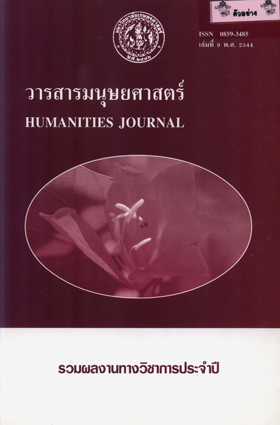Thai Classical Music and Its Movement from Oral to Written Transmission 1930-1942: Historical Context, Method, and Legacy Of The Thai Manuscript Project
Main Article Content
Abstract
The research topic “Thai Classical Music and its Movement from Oral to Written Transmission, 1930-1942: Historical Context, Method, and Legacy of the Thai Manuscript Project” aims to study the changes in transmission of Thai classical music, which was largely an oral tradition until the Thai Music Manuscript Committee began its work in 1930. By 1942, when the Project ceased its work, over 400 compositions of Thai classical repertoire, had been transcribed into Western staff notation. The manuscripts were never published, with the exception of two compositions, the Hormone Yen and ThamKhwan suites. The entire collection disappeared from Thai society after the Fine Arts Department burned in 1958. Luckily, a visiting American ethnomusicologist, David Morton, had saved the collection on year earlier by microfilming it in its entirety as part of his research of Thai classical music. The author located a copy of these five rolls of microfilm in the achieves of Kent State University’s Center for the Study of World Musics, but found that many pages of the microfilmed scores were illegible. In response, he established the Lost Thai Music Manuscript Restiration Project in 1993, which has as its eventual goal the restoration of the entire collection by converting the microfilmed scores to computer-generated natation (using the Finale computer program), for later publication for public use. Copies of several compositions are used for study in this research.


